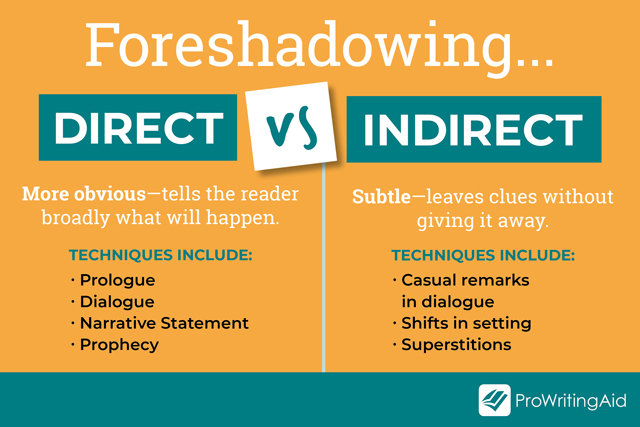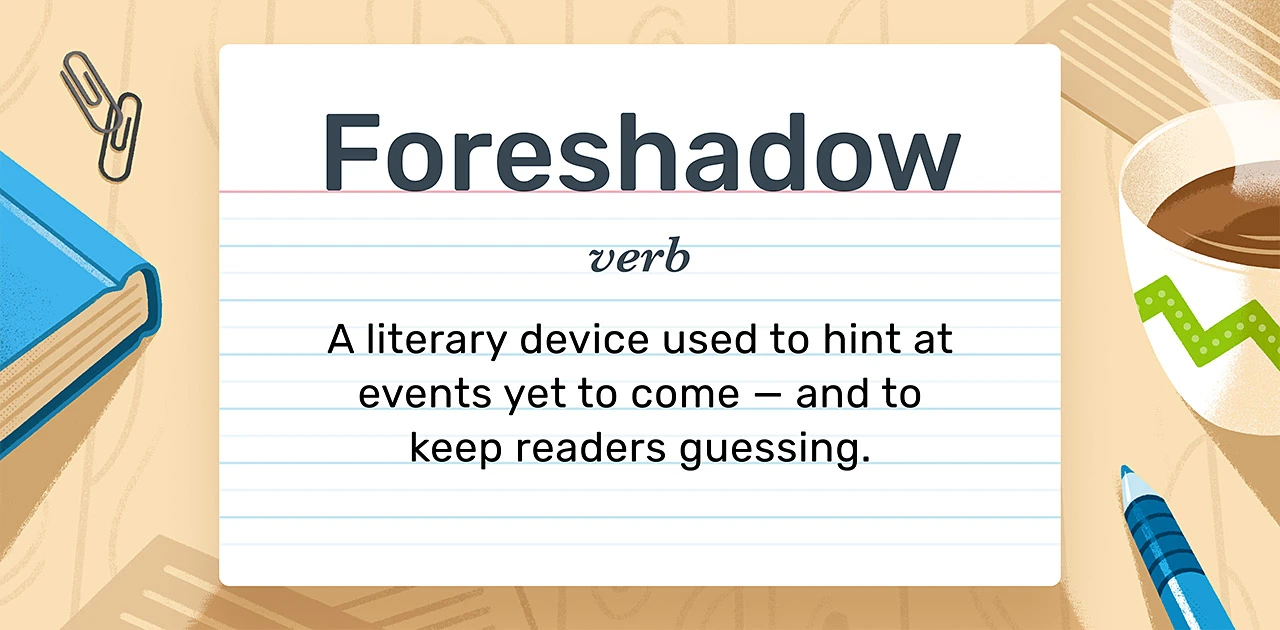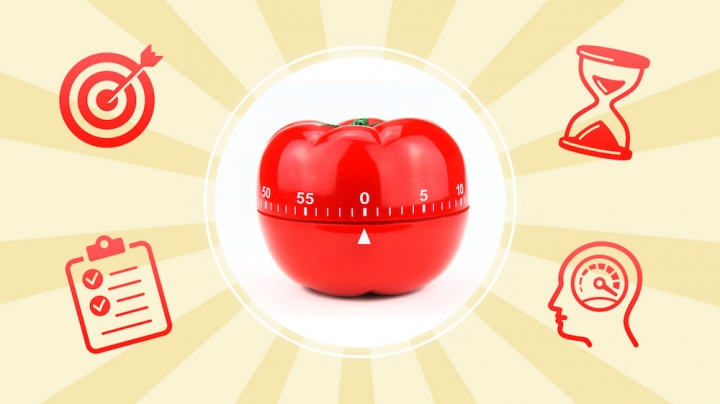
Foreshadowing is one of the most effective literary techniques for building suspense, creating anticipation, and enriching storytelling. It subtly hints at future events, guiding the reader toward key moments while maintaining an element of mystery.
Whether it’s a chilling prophecy, a recurring symbol, or an offhand remark that later proves crucial, foreshadowing keeps readers engaged by planting seeds of intrigue that will blossom as the story unfolds.
In this guide, we’ll explore:
- Types of foreshadowing
- Techniques to weave foreshadowing into a narrative
- Examples from classic and modern literature
- How to use foreshadowing effectively without revealing too much
Types of Foreshadowing in Novels

Foreshadowing can be subtle and symbolic or direct and ominous. The best authors use it in various ways to create a layered narrative experience.
1. Direct Foreshadowing (Overt Foreshadowing)
In this technique, the author explicitly states or hints at something that will happen later. This can be through narration, a character’s dialogue, or even a prophecy.
📖 Example: In Romeo and Juliet, Shakespeare foreshadows the lovers’ fate when Romeo says:
“My life were better ended by their hate, than death prorogued, wanting of thy love.”
This openly hints at Romeo’s eventual tragic demise.
2. Indirect or Subtle Foreshadowing
This form of foreshadowing is woven discreetly into the narrative through symbols, setting, dialogue, or minor events. Readers may not recognize its significance until the foreshadowed event occurs.
📖 Example: In Of Mice and Men, John Steinbeck foreshadows Lennie’s fate when he accidentally kills small animals, hinting at a much darker event to come.
💡 Why It Works: It provides a sense of inevitability without being too obvious.
3. Prophetic Foreshadowing (Predictions & Omens)
Sometimes, a dream, vision, or prophecy foretells events in the novel. These may be literal or symbolic, requiring interpretation.
📖 Example: In Macbeth, the witches’ prophecy sets the stage for Macbeth’s rise and fall:
“All hail, Macbeth! Hail to thee, Thane of Glamis! Thane of Cawdor! that shalt be king hereafter!”
💡 Why It Works: It creates dramatic irony because the audience knows Macbeth’s fate while he himself is unaware of how it will unfold.
4. Symbolic Foreshadowing
Authors use symbols, objects, or repeated motifs to hint at future events. This is a subtle but powerful technique for adding depth to a novel.
📖 Example: In The Great Gatsby, the green light at Daisy’s dock symbolizes Gatsby’s unattainable dreams and foreshadows his eventual downfall.
💡 Why It Works: It deepens thematic elements and allows readers to interpret the novel on multiple levels.
5. Flashback or Memory Foreshadowing
Sometimes, authors use flashbacks or past events to hint at future conflicts.
📖 Example: In Harry Potter and the Chamber of Secrets, Harry’s ability to speak Parseltongue (snake language) is revealed early in the novel, subtly foreshadowing his connection to Voldemort.
💡 Why It Works: Readers may dismiss the detail at first, making the revelation more satisfying when the connection is later revealed.
Techniques for Writing Effective Foreshadowing
To craft effective foreshadowing, authors must balance subtlety and clarity without making the story too predictable.
1. Use Dialogue to Drop Hints
✔ A character can make an offhand comment that later becomes significant.
✔ Superstitions, warnings, or concerns from side characters can foreshadow events.
📖 Example: In The Hunger Games, Peeta says, “I want to die as myself.” This foreshadows his struggle to maintain his identity after the Capitol brainwashes him.
2. Establish Recurring Symbols
✔ Objects (a key, a book, a locked door) that reappear throughout the story build mystery.
✔ Weather can foreshadow mood changes (storm approaching = conflict ahead).
📖 Example: In Wuthering Heights, the dark, stormy weather mirrors the turbulent emotions and tragic events in the novel.
3. Layer Subtle Hints Throughout the Narrative
✔ Early clues should blend naturally into the plot—not feel forced or obvious.
✔ Repeated imagery or words can build subconscious connections in readers’ minds.
📖 Example: In A Song of Ice and Fire, George R.R. Martin foreshadows the Red Wedding by referencing:
- A guest’s right to hospitality
- Direwolf howls
- Unusual tension between characters
These details hint at the shocking betrayal to come.
4. Create Misdirection (Red Herrings)
✔ Sometimes, false clues (red herrings) keep readers guessing and make the real foreshadowing more impactful.
✔ This is often used in mystery and thriller novels.
📖 Example: In Gone Girl, Gillian Flynn plants deliberate misdirections about Amy’s disappearance, making readers question what they believe.
5. Pay Off the Foreshadowing for Maximum Impact
✔ Foreshadowing is only satisfying if the hinted event actually happens.
✔ If a symbol, prophecy, or comment is emphasized, make sure it leads to something significant.
📖 Example: In Lord of the Flies, Piggy’s glasses symbolize knowledge and civilization. Their destruction foreshadows the boys’ descent into savagery.
Examples of Foreshadowing in Literature
📚 “The Great Gatsby” – F. Scott Fitzgerald
- The billboard of Doctor T.J. Eckleburg’s eyes foreshadows the novel’s themes of moral decay and judgment.
📚 “To Kill a Mockingbird” – Harper Lee
- Boo Radley leaving gifts in the tree hints at his eventual role as Scout and Jem’s protector.
📚 “Moby-Dick” – Herman Melville
- Captain Ahab’s obsession with vengeance and the recurring imagery of whales foreshadow his downfall.
Common Mistakes in Foreshadowing (and How to Avoid Them)
❌ Being Too Obvious – Avoid making foreshadowing too direct, or it loses impact.
✔ Solution: Keep it subtle enough that readers feel rewarded when they connect the dots.
❌ Forgetting to Follow Through – Introducing a mysterious element and then never addressing it leaves readers unsatisfied.
✔ Solution: Ensure foreshadowing leads to meaningful plot developments.
❌ Overloading with Unnecessary Clues – Too many hints can make the twist predictable.
✔ Solution: Balance subtle and direct foreshadowing to keep suspense intact.
Conclusion: Mastering the Art of Foreshadowing
Foreshadowing is a powerful tool that, when used effectively, adds depth, suspense, and emotional impact to a novel. Whether it’s a cryptic prophecy, a recurring symbol, or a seemingly minor detail that later proves crucial, foreshadowing keeps readers engaged and makes plot twists more satisfying.
The best foreshadowing feels natural—so much so that when the moment of realization arrives, readers can’t help but think, “Ah, I should have seen that coming!”







